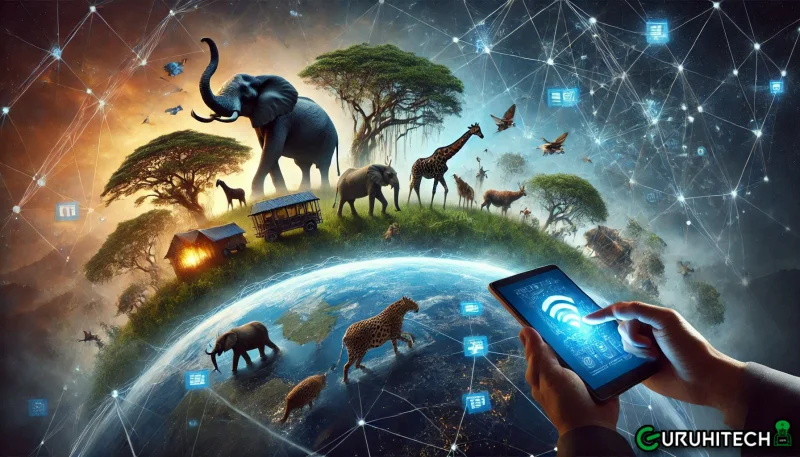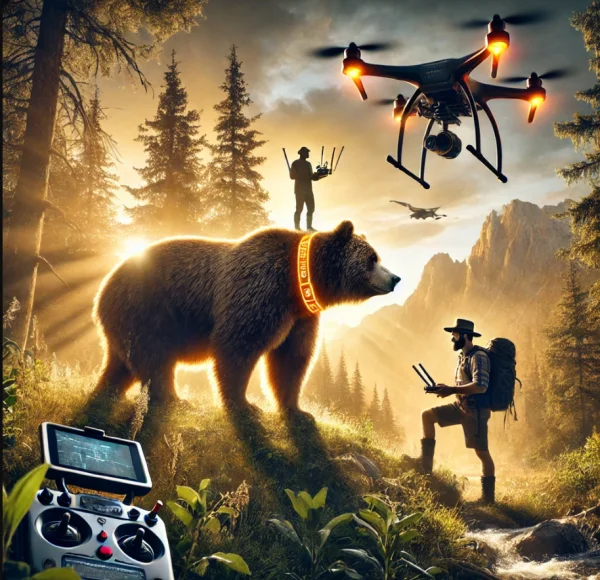The Impact of Technology on Wildlife Conservation and Human Survival

Technology has revolutionized nearly every aspect of modern life, including how we understand and interact with the natural world. From tracking endangered species to equipping explorers with tools for survival, technological advancements have significantly shaped wildlife conservation and human survival in the wild. However, as much as technology has bridged the gap between humans and nature, it also serves as a stark reminder of our limitations and responsibilities. The story of Timothy Treadwell, the self-proclaimed “Grizzly Man,” is one such example of the delicate balance between human intervention and nature’s unpredictability.
Advancing Wildlife Conservation Through Technology
Wildlife conservation has made remarkable progress thanks to the advent of cutting-edge technologies. Tools such as satellite tracking, camera traps, and drones have become indispensable for monitoring and protecting ecosystems. For example:
- Satellite Tracking: Tags placed on animals like sea turtles or polar bears help researchers track migration patterns and habitat usage. This data informs strategies to combat threats like climate change and habitat loss.
- Camera Traps: Strategically placed, these devices capture images of elusive species without human interference, aiding in biodiversity assessments and population studies.
- Drones: Offering aerial perspectives, drones monitor vast landscapes, detect poachers, and even plant trees in deforested areas.
These technologies have provided conservationists with real-time insights, improving the efficacy of efforts to protect endangered species and restore ecosystems.
Human Survival in the Wild: A Technological Lifeline
When it comes to human survival in remote or wild areas, technology has been a game-changer. Modern tools like GPS devices, emergency beacons, and portable water filtration systems have drastically improved the chances of survival. Adventurers, explorers, and researchers can now navigate treacherous terrains, find clean water sources, and call for help with the press of a button.
However, relying solely on technology without understanding the environment can be dangerous. The cautionary tale of Timothy Treadwell, a man who spent 13 summers living among bears in Alaska, underscores the importance of balancing technological aids with respect for nature’s raw power. His tragic demise highlights how even with advanced tools, humans remain vulnerable in the wild.

Timothy Treadwell: Bridging the Gap Between Technology and Nature
Treadwell’s story exemplifies the complex relationship between humans, technology, and wildlife. Armed with cameras and recording equipment, he sought to document and live among Alaskan grizzly bears, believing his work could foster a deeper understanding and appreciation for these majestic creatures.
While his efforts brought global attention to bear conservation, his tragic end—killed by a bear he aimed to protect—serves as a sobering reminder of the risks of overestimating technology’s ability to shield us from nature’s inherent dangers. His recordings revealed not just the beauty of the wild but also the peril of underestimating its unpredictability.
Technology’s Role in Mitigating Human-Wildlife Conflict
In areas where human activity overlaps with wildlife habitats, technology has become a critical tool for mitigating conflicts. For instance:
- Early Warning Systems: Infrared cameras and motion sensors alert farmers when elephants or predators approach crops or livestock, reducing harmful encounters.
- Virtual Fences: GPS-enabled collars on animals like lions and wolves signal when they approach human settlements, allowing conservationists to intervene.
- Mobile Apps: Platforms like iNaturalist enable communities to report sightings of endangered species, creating a collaborative approach to conservation.
These innovations have not only saved countless animals but also prevented loss of human life and livelihoods, fostering coexistence between species.
Ethical Considerations in Using Technology
While technology has immense potential for wildlife conservation and survival, its use raises ethical questions.
- Intrusion into Wildlife: Devices like drones, if misused, can disturb animal behavior and stress ecosystems.
- Dependence on Technology: Over-reliance on gadgets in survival situations may lead to a loss of essential wilderness skills.
- Exploitation Risks: Poachers and illegal traders have also leveraged technology, such as GPS trackers, to locate and target animals.
Finding a balance between technological innovation and ethical stewardship is crucial to ensure that our interventions do not cause more harm than good.
Balancing Technology with Traditional Knowledge
While technology has propelled conservation and survival efforts to new heights, traditional knowledge remains invaluable. Indigenous communities, for instance, have lived in harmony with nature for centuries, relying on keen observation and an intrinsic understanding of ecosystems.
Combining modern technology with such traditional wisdom can lead to holistic and sustainable approaches to conservation and survival.
Looking Ahead: The Future of Conservation and Survival
As we move forward, advancements in artificial intelligence (AI) and machine learning promise to further revolutionize wildlife conservation. Predictive models can identify poaching hotspots, and AI-driven systems can analyze massive datasets to detect trends in biodiversity loss.
For human survival, emerging technologies like bio-engineered fabrics and solar-powered gear are making exploration safer and more efficient. Yet, as Timothy Treadwell’s story reminds us, no amount of technology can replace respect for the untamed forces of nature.
Conclusion
Technology has undeniably reshaped our relationship with the natural world, offering unprecedented tools for wildlife conservation and human survival. From saving endangered species to ensuring adventurers’ safety, its contributions are invaluable.
As we continue to innovate, the challenge lies in using technology not as a crutch but as a complement to our understanding of nature. Only by respecting the wild and acknowledging our place within it can we ensure a harmonious coexistence for generations to come.
Ti potrebbe interessare:
Segui guruhitech su:
- Google News: bit.ly/gurugooglenews
- Telegram: t.me/guruhitech
- X (Twitter): x.com/guruhitech1
- Bluesky: bsky.app/profile/guruhitech.bsky.social
- GETTR: gettr.com/user/guruhitech
- Rumble: rumble.com/user/guruhitech
- VKontakte: vk.com/guruhitech
- MeWe: mewe.com/i/guruhitech
- Skype: live:.cid.d4cf3836b772da8a
- WhatsApp: bit.ly/whatsappguruhitech
Esprimi il tuo parere!
Ti è piaciuta questa notizia? Lascia un commento nell’apposita sezione che trovi più in basso e se ti va, iscriviti alla newsletter.
Per qualsiasi domanda, informazione o assistenza nel mondo della tecnologia, puoi inviare una email all’indirizzo [email protected].
Scopri di più da GuruHiTech
Abbonati per ricevere gli ultimi articoli inviati alla tua e-mail.
